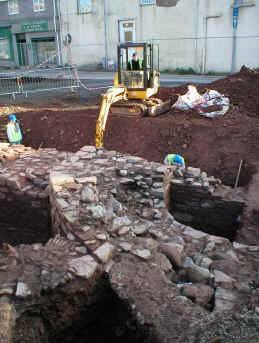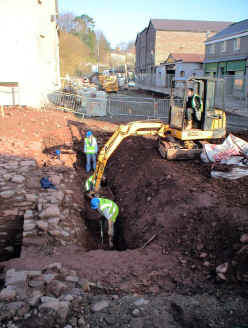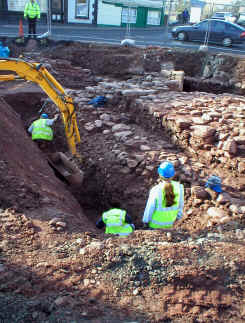Brecon - the Medieval Wall Unearthed
Recent archaeological work at the Ship Street - Market Street Junction has roused keen interest in Brecon. Inner-relief road-building was temporarily suspended for study of Market Street, an area which, until comparatively recently was used for domestic and commercial purposes. An exciting event was the discovery of substantial remains of a mediaeval structure abutting under the projected roadway.
 |
 |
The remains appear to date back to the Norman period. The medieval town walls are generally regarded to date back to the 13th century. In 1093 Bernard de Newmarch half brother of William the Conqueror, clinched victory over Welsh leaders Bleddyn ap Maenarch and Rhys ap Tewdwr. Subsequently, Norman conquest, occupation and settlement of this area was secured by the building of Brecon Castle. The primary defence function was strengthened by the building of a stone wall which circled the entire town, topped by towers or turrets, providing entrance at the Watton Gate, the Struet Gate and the Water gate, which is the location now been excavated. The town wall originally circumscribed an area approximately 300m by 400m.
The excavation has exposed a section of the wall which is 10 feet wide (approx 3.048m). The tower section is 7 feet wide (approx. 2.13m). An estimate of the town's defensive structure, oval in shape , is 1066 yards (approx. 974.75m). These figures indicate the strength of the fortification. Probably completed by the late 13th century, it was intended to repel Welsh attacks, and also to protect trade and commerce within the walls.
"Border" archaeologists are carefully excavating the area and decisions are being made as to how to best preserve this local heritage with modern techniques. Other artifacts found in the excavation include a Queen Anne coin from the early 18th century. All such objects will be finally deposited in Brecon Museum and Art Gallery.






